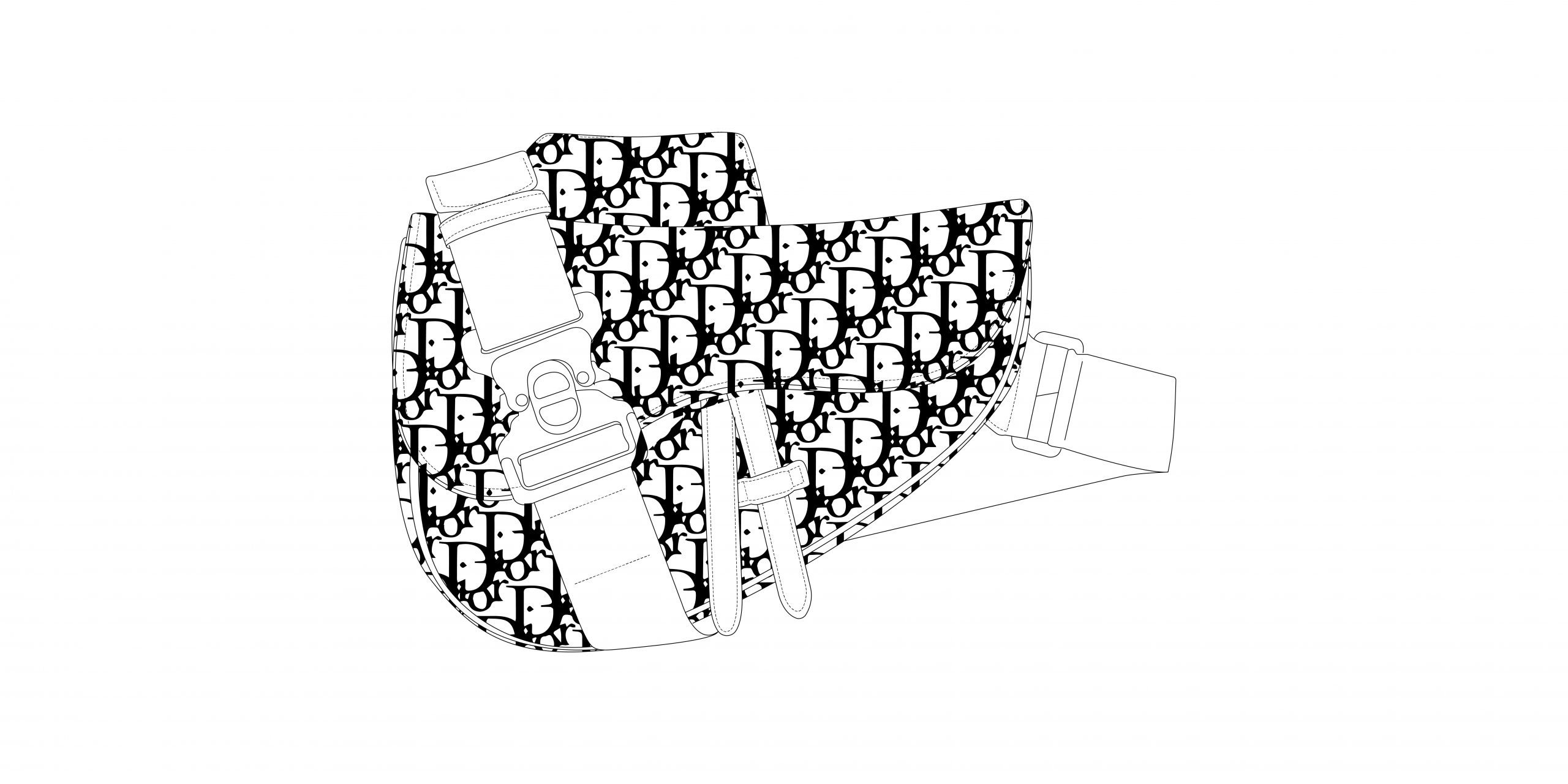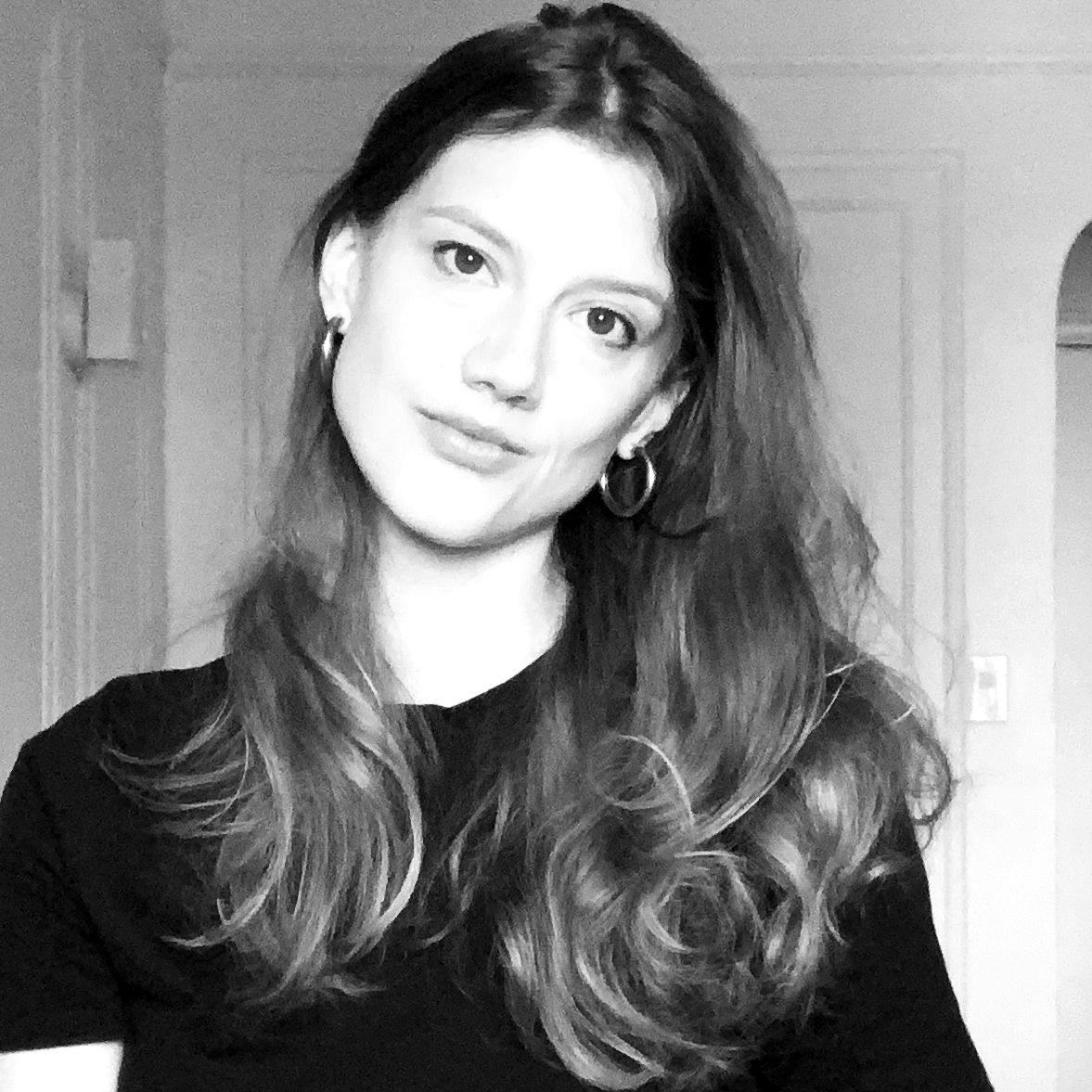For its Fall 2021 womenswear presentation, Versace unveiled a new monogram: La Greca, a geometric logo-filled pattern that calls to mind Goyard’s famed M.C. Escher-like print. The new print, used on clothes, accessories and the fashion show set itself, gave Versace an asset that it had been missing until then. Unlike its century-old luxury competitors like Louis Vuitton or Gucci, Versace, founded in 1978, never had the same type of iconography that can make a simple piece like a handbag instantly recognizable as a Versace bag.
By 2021, such a pattern might be essential for today’s luxury brands. A monogram is a key asset not just for fashion houses to brand their own in-line pieces, but to make a stake in the culturally and financially lucrative world of collaborations.
“A monogram’s success is attributed to several factors. First, the most recognizable ones are ones that are memorable and visually pleasing. Design elements like colorways, typography and sizing are the key to turning a logo into an iconic monogram,” says Sean Conway, Sneakers and Streetwear Expert for The RealReal. “Second is its adaptability. Being able to repurpose a monogram across categories like streetwear, sneakers, and menswear promotes the logo’s longevity and clout. The legacy of the brand also plays a huge role. At the end of the day, customers will shop brands they know and believe in.”
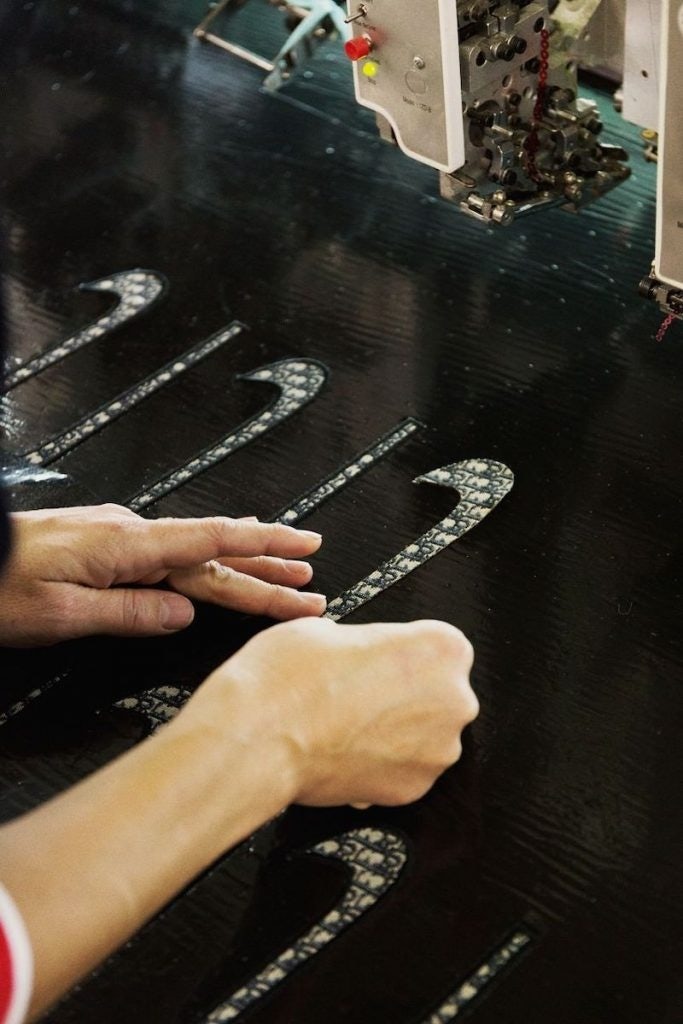
Legacy luxury brands have turned to remixing their logos and monograms in collaborations time and time again in recent years, from Louis Vuitton and Supreme to Gucci and The North Face. And when it came to applying Dior’s stamp on the Air Jordan 1 for their 2020 collaboration, it’s no surprise that Kim Jones chose to mix Nike’s most valuable asset, the Swoosh, with Dior’s: the Oblique pattern, which 50 years after its launch has become a mainstay on not only the Jordan collab, but all manner of Dior apparel and accessories.
“It's not by accident that Kim had this idea of the Oblique,” says Florence Müller, curator of the Dior: From Paris to the World exhibition, of the Oblique’s placement on the Jordan. The Nike Swoosh represents movement, which was also, she notes an important tenet of Dior’s code as well.
The Dior Oblique pattern was first introduced in 1967 by Dior’s then-creative director Marc Bohan, taking its name from the 1951 collection of the same name. Bohan, though he lacked some of the visionary status of his predecessor Yves Saint Laurent, was crucial in helping the house tap into the vibrancy of the 1960s. “[Bohan] was more an interpreter of the lifestyle of the ’60s. And translating it into the world of luxury,” Müller says.
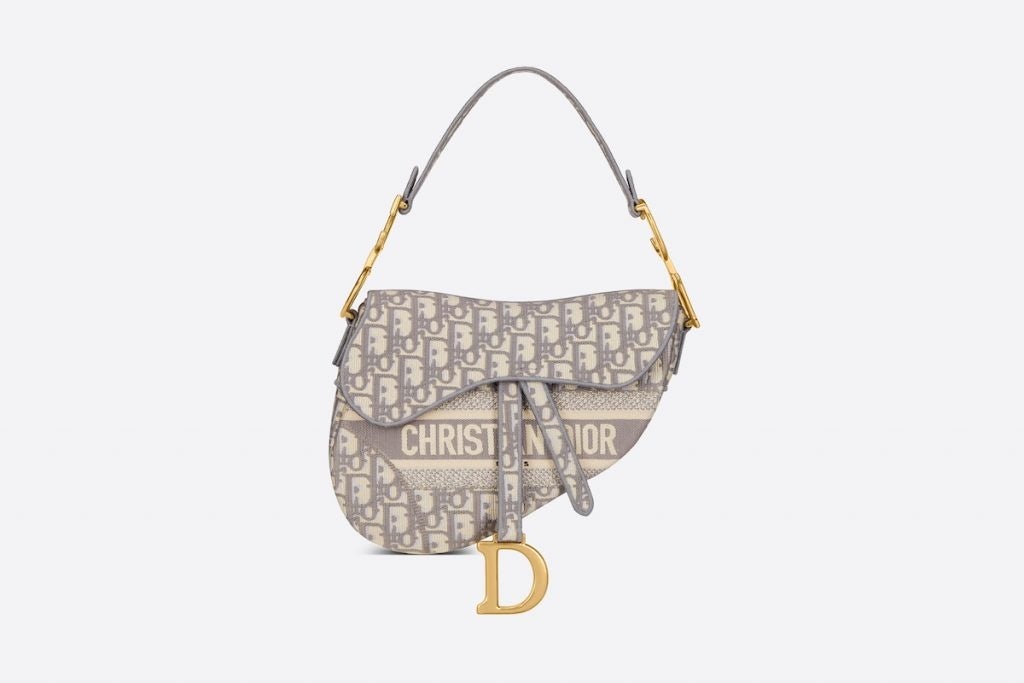
Bohan used the Oblique on bags and accessories and even in store decor throughout the ’70s, in a logo-drenched look that could fit right at home in the 2010s and ’20s. But the idea of logos as a fashion statement was a relatively new concept in the early part of the 20th century, Florence notes, first introduced by Jean Patou in 1926. But it took decades for logos to become as ubiquitous as they have become in fashion. “It never appeared in a more elegant field,” Müller says of logos’ early days. “Until the 1990s I would say, when there was a whole rage about logos around the end of the 90s.”
In the decades to come, logos have only become more de rigueur for fashion brands, and the Oblique has risen and fallen within Dior’s repertoire based on the trends of the time and the tastes of various creative directors. John Galliano’s post-modernist sensibility brought the Oblique onto bikinis and accessories while Raf Simons’ minimal tendencies matched the more austere, logo-less fashions of the post-recession 2010s, and Maria Grazia Chiuri and Kim Jones have returned to the Oblique for the brand-obsessed fashions of the 2020s.
Throughout the past century though, logos have helped to differentiate ready-to-wear pieces from more elegant, less emblazoned couture pieces Florence adds. But while Dior made its name as a couture house, part of its longevity is due to Christian Dior’s business sensibility in looking beyond only gowns. “He was a real artist, but he was a real businessman as well,” says Muller, noting that Dior launched the Miss Dior perfume as soon as he launched the clothing line, in addition to licensing the Dior name to other luxury goods before the model was the norm in fashion.
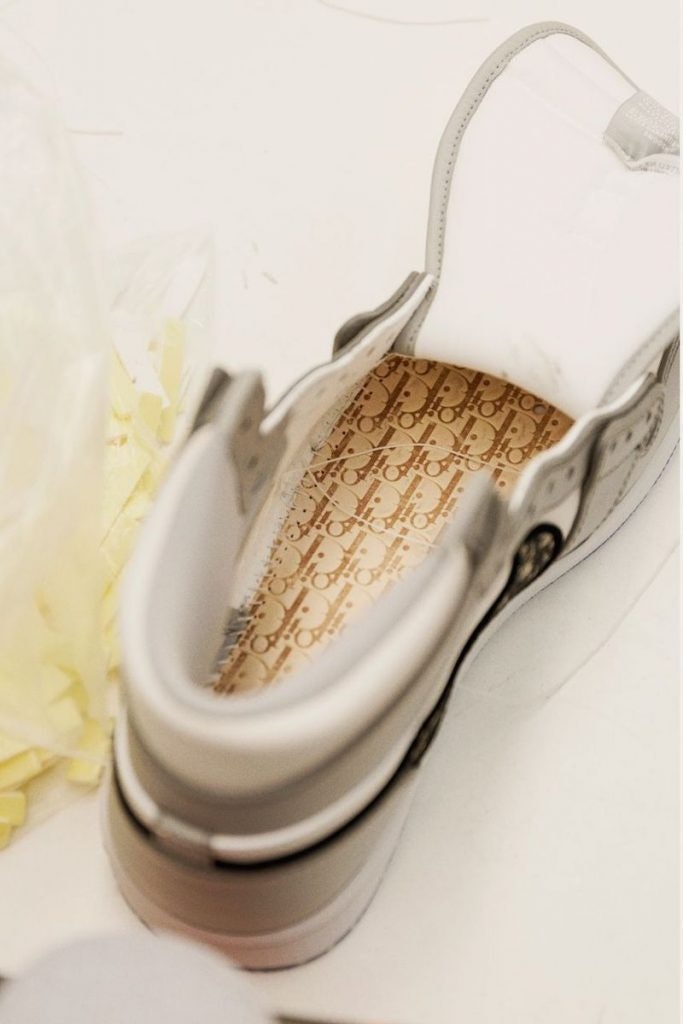
That the Dior Jordan exists at all, let alone was a success, is a direct result of Dior’s own business acumen, in creating a luxury brand that could one day believably meld with a basketball sneaker. “Having an iconic logo increases a sneaker’s value tremendously - especially with something as classic as the Oblique. The Dior Jordan sneakers specifically sold for up to 318 percent of retail. By utilizing the Oblique monogram, Nike is honoring the integrity of this legacy designer, and is bringing in a different customer that wouldn’t have otherwise been interested,” Conway says. The most recent Dior Homme collection, he adds, also relies heavily on the Dior Oblique and has seen a 106% increase in search demand in the last year.
There are, of course, more subtle aspects of collaborations like the Dior Jordan that make it recognizably Dior beyond the obvious monogram – the soft gray color for example, which according to Florence was favored by Christian Dior for its callback to the styles of the 18th century, a major inspiration for the house that brought exuberance back to fashion post-World War II. And we may see more collaborations use less obvious signifiers to represent their brand as the logomania fad abates. “ We’re going to see a lot more collaborations focusing on silhouettes and colorways rather than just logos and monograms,” says Conway. “There will always be value in changing up design choices by using recognizable iconography, and luxury brands will continue to use it as an anchor to their collaborations.”
But there’s no denying the clear appeal of a well-applied monogram, whether it’s in the form of a classic Louis Vuitton monogram or a remixed version overlaid with Takashi Murakami flowers. The successful monograms, like those of Goyard, LV and Dior, stand the test of time because of their unending adaptability to be applied to everything from wallets and trunks to sneakers and hoodies. Perhaps Versace’s La Greca will prove such versatility in the years to come.
